Denominator
In a fraction, the denominator represents the total number of equal parts into which a whole is divided. It is the bottom number in a fraction and indicates the number of equal parts that make up the whole.
For example, in the fraction 3/4, the denominator is 4, which means the whole is divided into 4 equal parts.
The denominator is important because it tells us the size of each part and helps us compare different fractions. When adding or subtracting fractions, the denominators must be the same to perform the operation.
Understanding the denominator is crucial for working with fractions and for grasping the concept of parts of a whole.
.◂Math Worksheets and Study Guides Third Grade. Fractions
Study Guide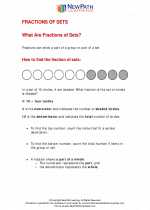 Fractions
Fractions  Worksheet/Answer key
Worksheet/Answer key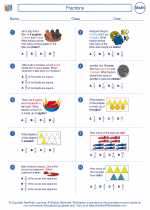 Fractions
Fractions  Worksheet/Answer key
Worksheet/Answer key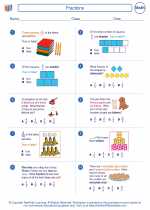 Fractions
Fractions  Worksheet/Answer key
Worksheet/Answer key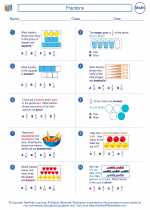 Fractions
Fractions  Worksheet/Answer key
Worksheet/Answer key All About Fractions
All About Fractions  Worksheet/Answer key
Worksheet/Answer key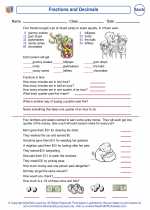 Fractions and Decimals
Fractions and Decimals  Worksheet/Answer key
Worksheet/Answer key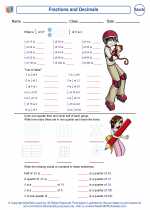 Fractions and Decimals
Fractions and Decimals 

 Worksheet/Answer key
Worksheet/Answer key
 Worksheet/Answer key
Worksheet/Answer key
 Worksheet/Answer key
Worksheet/Answer key
 Worksheet/Answer key
Worksheet/Answer key
 Worksheet/Answer key
Worksheet/Answer key
 Worksheet/Answer key
Worksheet/Answer key

Create And Print more Fractions worksheets with Comparing Fractions, Equivalent Fractions, and Simplifying Fractions
The resources above cover the following skills:
Number and Operations (NCTM)
Understand numbers, ways of representing numbers, relationships among numbers, and number systems.
Develop understanding of fractions as parts of unit wholes, as parts of a collection, as locations on number lines, and as divisions of whole numbers.
Algebra (NCTM)
Use mathematical models to represent and understand quantitative relationships.
Model problem situations with objects and use representations such as graphs, tables, and equations to draw conclusions.
Grade 3 Curriculum Focal Points (NCTM)
Number and Operations: Developing an understanding of fractions and fraction equivalence
Students develop an understanding of the meanings and uses of fractions to represent parts of a whole, parts of a set, or points or distances on a number line. They understand that the size of a fractional part is relative to the size of the whole, and they use fractions to represent numbers that are equal to, less than, or greater than 1. They solve problems that involve comparing and ordering fractions by using models, benchmark fractions, or common numerators or denominators. They understand and use models, including the number line, to identify equivalent fractions.